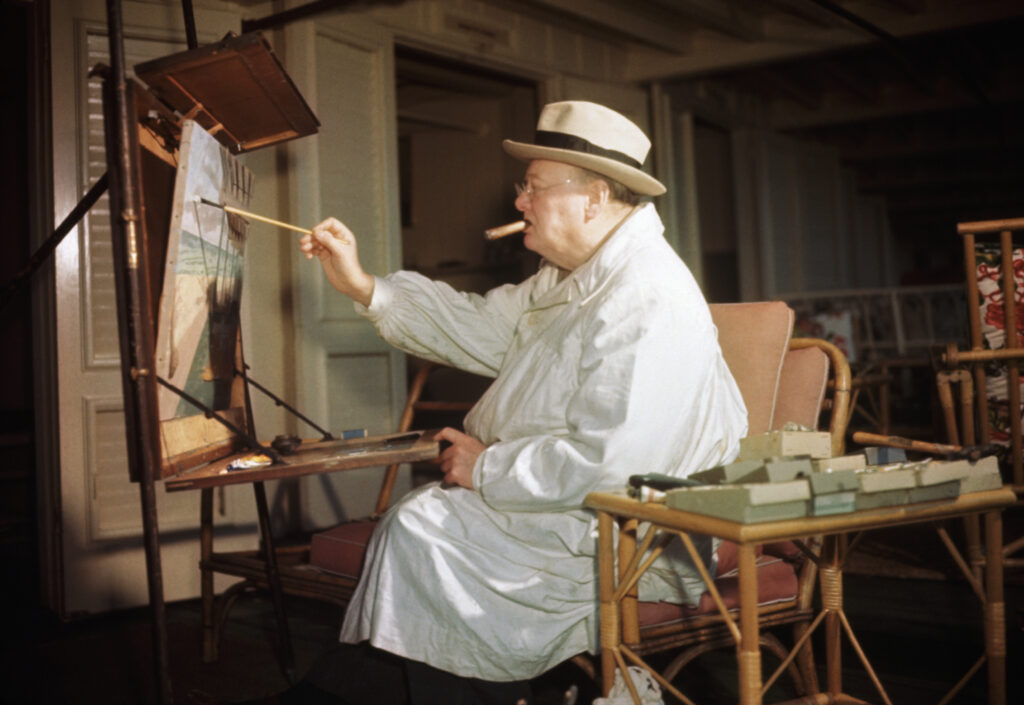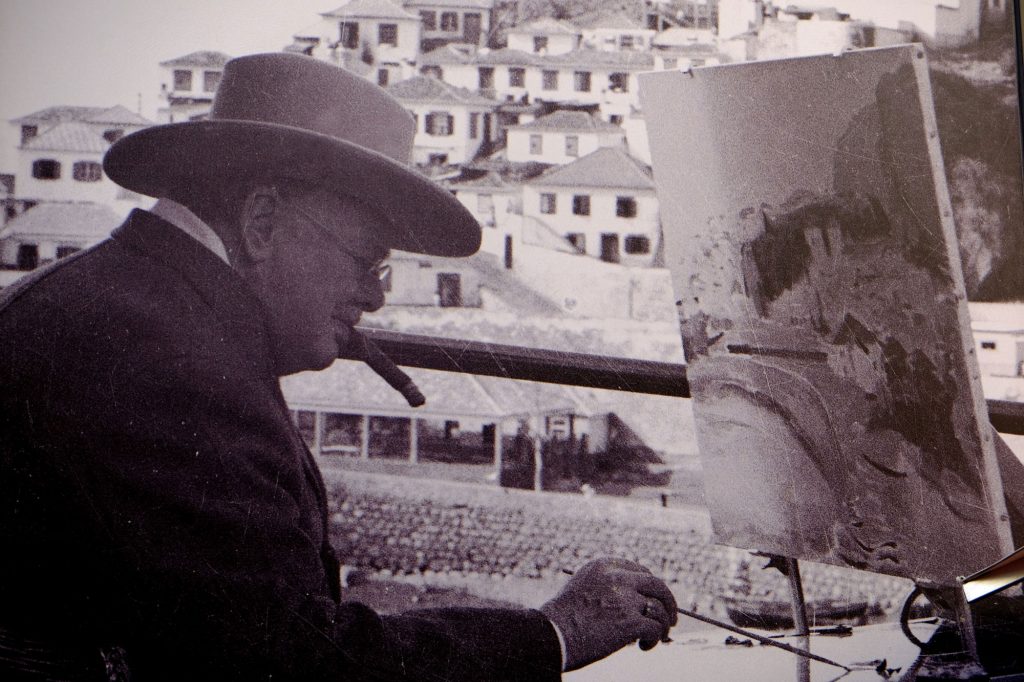“Always remember, a cat looks down on man, a dog looks up to man, but a pig will look man right in the eye and see his equal.” There was once an English enthusiast Lord witticisms and man close to nature that had an influence significantly on world history. His name was Winston Churchill and accompanied his decisive action as Prime Minister of the British kingdom during the Second World War.
Colossal and colorful Sir Winston Leonard Spencer-Churchill (1874-1965), the youngest son of the seventh Duke of Marlborough and of an American, born in the castle of Blenheim, the very place where a exhibition dedicated to the Chinese artist with political action now global, Ai Weiwei. Against all expectations, in addition to the passage of one and the other in the castle of the Dukes of Marlborough, these two men have one thing in common. The Chinese is an artist whose action, with the circumstances, turned to open political opposition to the regime of his country. While Winston Churchill was a politician by vocation, and it was clearly the circumstances that led him to become a painter.
Churchill as a painter

The famous English Prime Minister narrates his enthusiasm for painting, which he describes as a “hobby without major pretensions” in the who went out of his way to distract himself from tensions and mental exhaustion, which caused having to deal with a high number of political and military responsibilities and obligations.
We couldn’t stop thinking about another political-warmonger who, like Churchill, was also passionate about painting; Adolf Hitler.
While the German Hitler, assumed painting in its beginnings as a vocation and possibility of trade, for the English Churchill, the conditions that led him to it were different.
At just 18 years old, Hitler applied to enter the Vienna Academy of Fine Arts. Although on that first occasion (1907), he passed the written exam, he was rejected in the drawing test, after evaluating the portfolio of his works. A year later he reapplies to enter and this time he is rejected in the written test. Despite being disqualified on two occasions, which he accused the Jews of, as he said: ” The Academy was controlled by them”, he installed himself as a painter dedicating himself to drawing small-format pencil and watercolor painting, in which It exhibits landscapes and buildings, works in which it displays its greatest expressive force, very different from the low quality of the realizations in which it paints the human figure.
On the contrary, Winston Churchill began painting at the age of 40, without academic training in the subject, beginning with the watercolor painting of his children, and later working with oil as an expressive technique. He traveled with his painting equipment, taking advantage of all his free and vacation moments to dedicate himself to his pictorial frenzy. He left behind more than a hundred paintings, with images that do not reflect their political-military nature, since they only show landscapes, interiors and still lifes with flowers.

Churchill’s enthusiasm for the canvas is a facet rarely known to the public, and even more so, that paintings by Winston Churchill are sold today for high numbers. In 2007 one of his works was sold at Sotheby’s (London), for a million pounds (just over $ 1.5 million).
The search for that mental and spiritual tranquility led Churchill to painting, we do not know whether out of passion or as an escape valve for the demons that tormented him in life.
Hitler was perhaps the same demon personified in a human creature, but Churchill had to live, until his last breath, with the weight of conscience of the military political mistakes made.
To avoid the pressure of who he was, a public figure, and to get objective opinions about his art, he used pseudonyms, such as that of Charles Morin for an exhibition held in Paris in 1920. Thirty years later, the Royal Academy accepted a couple of his works, when he used the pseudonym of Mr. Winter.
And painter Winston Churchill never stopped learning for himself, even in one of his many articles he advised all those who wanted to enter the world of painting at a mature age to skip an academic training. He considered that he did not have enough time to invest in classes, he saw them as a waste of time.
Most beautiful paintings
As he most admired the work of the Impressionists, such as Manet, Monet, Cezanne and Matisse, he went to the same places where they once painted and sought his inspiration there. He used bright colors, because painting served to improve his mood. You can see how Peonies By Claude Monet looks like at the lavelart.com and see what inspired him. This can be seen in works such as View of Chartwell and Shadows on a Staircase in Southern France. Although there were works that left a different impression, such as Near Lochmore on the Duke of Wesminster’s Scottish Estate and A Storm over Cannes. Still Life, Fruit from the 1930s is also type of painting he often painted. He only stopped his artistic activity during World War II, except for the elaboration of a painting during the great Conference of Allies that took place in Casablanca, which showed the beauty of the city of Marrakech. He would give it to Roosevelt later.
Eleven of those works, painted by Churchill from the 1920s to 1940s, are on display for sale at the Heather James Fine Art Gallery in Los Angeles. Valued at between $ 1 million and $ 3 million , they comprise nine landscapes, a coastal scene and still life, plus gardens and properties from friends and family vacation places, including destinations in France and Morocco.
The Goldfish Pool at Chartwell, a painting of a pond he made at his home in the countryside, was sold at auction for 1.8 million pounds ($ 2.8 million).

Conclusion:
Although he will be remembered for many other things than for his hobby, still, if you are an art lover, don’t forget to take a closer look at his work.
